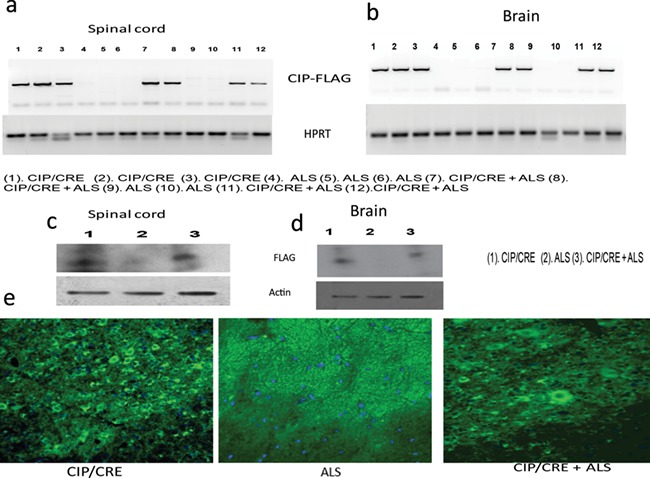Figure 1.

Characterization of CIP Tg (CIP/Chat CRE) and TriTg (CIP/Chat CRE +ALS) mice. The original CIP (CIP floxed) transgenic breeder mice were a generous gift from Dr Sashi Kesavapany and have been maintained on a pure C57BL6 background. The CIPTg construct contains a 3′-FLAG-tagged CIP transgene incorporated in to the ROSA26 locus whose 5′ regulatory elements were separated from the coding region with a floxed stop sequence. An frt-flanked neomycin resistance (Neo) cassette was inserted next to the transgene before the 3′ homology arm (43). The CIP floxed mice crossed with ChAT-IRES-Cre transgenic mice (Stock no 006410; Jackson Laboratory). The CIP Chat CRE mice then crossed with ALS mouseSOD1G37R) (Stock no 008342; Jackson Laboratory). (A and B) Representative RT-PCR images of spinal cord and brain from 21.4-week-old CIPTg, ALS and TriTg. (C and D) Immunoblot analyses of brain and spinal cord lysates from CIPTg, ALS and TriTg mice using anti-FLAG antibodies. Equal amounts of protein loading were confirmed by reprobing the membrane with anti-tubulin antibody. (E) Representative confocal images of spinal cord from 21.4-week-old CIPTg, ALS and TriTg mice. The sections were immunostained with anti-FLAG antibody (green), and nuclei were counterstained with DAPI (blue).
